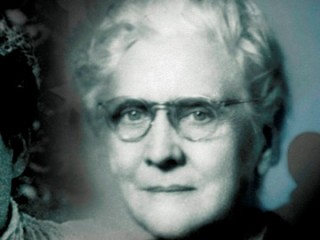
Mary White Ovington biography
Date of birth : 1865-04-11
Date of death : 1951-07-15
Birthplace : Brooklyn, New York City, United States
Nationality : American
Category : Historian personalities
Last modified : 2011-11-23
Credited as : civil rights reformer, NAACP, The Crisis
Mary White Ovington was a civil rights reformer and a founder of the National Association for the Advancement of Colored People.
Mary White Ovington, born in Brooklyn, New York, in 1865, was the daughter of wealthy parents who raised her in the tradition of those men and women who had worked for the abolition of slavery in the United States. Two of the family heroes were abolitionists William Lloyd Garrison and Frederick Douglass. In her youth Ovington was encouraged in the area of racial and civil rights reforms by her Unitarian minister, who was actively involved in social issues. At Radcliffe College Ovington was thoroughly tutored in the socialist school of thought and subsequently felt that racial problems were as much a matter of class as of race.
When she returned to New York in 1891 after her family suffered financial reverses, Ovington lived and worked at the Greenpoint and Lincoln settlement house projects, although she was often the only white person in the neighborhood. While doing this work she became acutely aware of some of the race and class issues faced by African Americans in New York every day. In 1903, after Ovington heard a speech by Booker T. Washington, a prominent African American spokesman of the day, she realized even more forcibly how much discrimination African Americans encountered in the North.
When Ovington became a fellow of the Greenwich House Committee on Social Investigations in 1904 she began a study about African Americans in New York. It was published in 1911 as Half a Man: The Status of the Negro in New York. During the time that she was conducting the study Ovington had the opportunity to correspond and talk with W. E. B. DuBois, an African American academician with a doctorate from Harvard University. Later, DuBois invited Ovington to meet with the founding members of the Niagara Movement in 1905. This movement was mostly composed of African American activists who were attempting to find some viable means of combatting racial discrimination. After the bloody Springfield, Illinois, race riots of 1908, African Americans and whites from the Niagara Movement and other groups concerned about what seemed to be a deteriorating racial climate met in May 1909 to form the organization that would eventually be called the National Association for the Advancement of Colored People (NAACP).
The mission of the organization was to combat racial violence, especially lynching and police brutality, and to work to eliminate discrimination in the areas of employment, public education, housing, voting, public accommodations, travel, and health services. The NAACP was also concerned with peonage, a system by which African Americans in the South were held in involuntary servitude. The group envisioned a national organization governed by a board of directors with branches all over the United States. NAACP tactics for combatting racial problems would be to publicize acts of racial terrorism in sympathetic newspapers in the United States and abroad and to take cases of obvious discrimination to court in order to establish, hopefully, favorable precedents in the area of civil rights.
The group encountered opposition from without. For example, Booker T. Washington opposed the group because it proposed an outspoken condemnation of racist policies in contrast to his policy of quiet diplomacy behind the scenes. Many newspapers which were owned by or allied with Washington spoke out against the fledgling NAACP. There were also problems within the new association. A chairperson of the board of directors, Oswald Garrison Villiard, grandson of the famous abolitionist William Lloyd Garrison, often clashed with DuBois, the editor of the NAACP journal, The Crisis, over matters of policy and control.
Ovington, who was a member of the NAACP's board of directors from the outset and served in almost every capacity until her retirement in 1947, often found that her lot was to be the mediator between various factions on the board. Ovington was a tireless worker who had, it seemed, an innate understanding of organizational power. Villiard described her as a perfect official who was always unruffled and "a most ladylike, refined and cultivated person." DuBois stated that she was one of the few white persons he knew who was totally free of racial prejudice.
Ovington served on a large number of the board's committees and was generally available to fill the vacancies left by departed staff or board members. For example, in 1911 Ovington served without pay as acting secretary for the association even though she still dedicated much of her time to the Lincoln settlement house. In 1912 she was elected as vice president of the board. When some of the board members went to serve in World War I in 1917 Ovington became acting chairperson of the board, and in 1919 she was officially elected to the position and continued to serve in that capacity until 1947. The year that she was elected the NAACP had 220 branches and over 56,000 members and the circulation of The Crisis was over 100,000.
The organization continued to grow in numbers and popularity. Sometimes its growth gained its own momentum. In local areas when people were outraged by racial violence or injustice they turned to the NAACP, hoping that something could be done to ensure equal treatment of African Americans. After only minimal success in some areas, Ovington suggested that the NAACP devote most of its efforts to the desegregation of the nation's school systems. Isolated successes in this area finally led to the landmark U.S. Supreme Court decision Brown v. Board of Educationin 1954, which declared that segregated schools were illegal. Unfortunately, Ovington died in 1951, three years before the decision was handed down, but not before she had the opportunity of seeing some of the walls of racial discrimination begin to crumble.
















